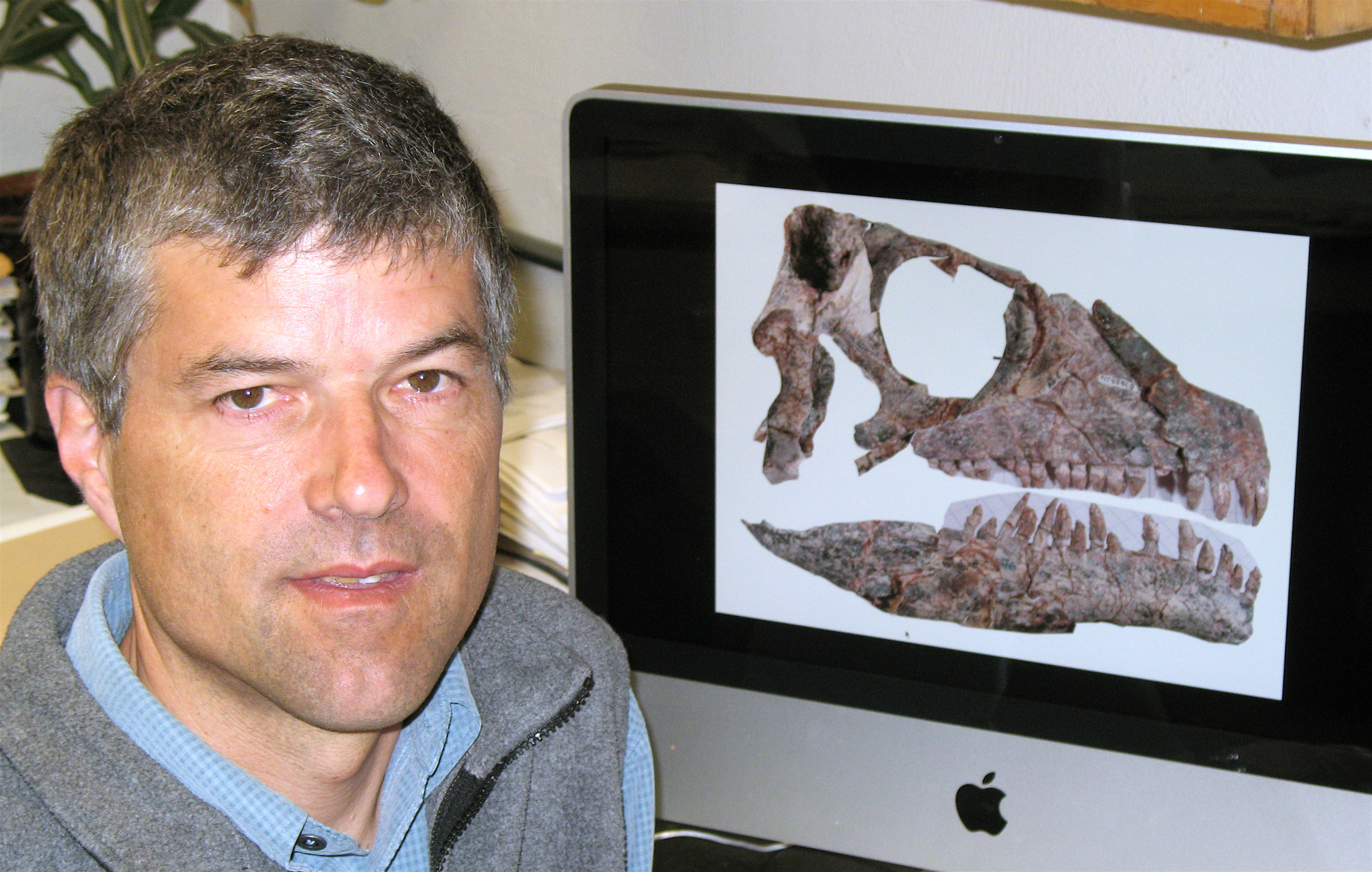
Following careful study of a prehistoric skull of a new species unearthed in Madagascar, Azendohsaurus madagaskarensis, it turns out
Azendohsaurus is not an early dinosaur as long assumed, but rather something even more remarkable.
After scientists pieced together an entire skull of this 230-million-year-old azendohsaur –– a group known previously from just teeth and jaws –– these animals have now been aligned with a very early branch of the reptile evolutionary tree.
In a study published in the journal Palaeontology, UC Santa Barbara Earth Science professor Andre Wyss and other scientists concluded that many aspects of
Azendohsaurus are far more primitive than previously assumed, which means that its plant-eating adaptations –– similar to those found in some early dinosaurs –– were developed independently.
"Even though this extraordinary ancient reptile, a member of the
‘Archosauromorpha' (a group of reptiles that includes birds and crocodilians, but not lizards, snakes, or turtles), looks similar to some plant-eating dinosaurs in some features of the skull and dentition, it is in fact only distantly related to dinosaurs," said John J. Flynn, curator in the Division of Paleontology at the American Museum of Natural History, and lead author of the study. "With more complete materials, we reassessed features like the down-turned jaw and leaf-shaped teeth found in A. madagaskarensis as convergent with some herbivorous dinosaurs."
The original specimens of the genus Azendohsaurus were a fragmentary set of teeth and jaws found in 1972 near a village in Morocco's Atlas Mountains. A related species was found in the late 1990's in Madagascar, the world's fourth-largest island, off the east coast of Africa. The current study is based on more recently discovered Malagasay fossils. The fossils, including multiple individuals that likely perished together, were uncovered by a team of U.S. and Malagasay paleontologists from red sediment in an inconspicuous gully.
"It turns out that there are simply remarkable fossils there (in Madagascar)," Wyss said. "We found this site in the southwest part of the country. It was quite rich with fossils. We recovered a lot of really amazing animals."
This species was initially identified as an early dinosaur in a study published in the journal Science more than a decade ago, but the more recently unearthed fossils have provided the first substantial glimpse of what this animal looked like –– and proof that A. madagaskarensis was not a dinosaur.
A. madagaskarensis lived during the period of time that dinosaurs, crocodile relatives, mammals, pterosaurs, turtles, frogs, and lizards were getting their start, and when all of the continents were connected to the supercontinent Pangaea. A. madagaskarensis was 2-4 meters (6-13 feet) long and weighed between 44 and 110 pounds. It was an efficient, vegetation-slicing herbivore –– a veritable, legged "weed whacker" –– with teeth covering not only its jaws but also the roof of its mouth.
Even though early archosaurs were commonly thought to be primarily carnivorous, A. madagaskarensis shows that traits associated with herbivores were much more widespread across archosaur reptiles.
"Now there are many more cases of herbivorous archosaurs," Wyss said. "We are rethinking the evolution of diet and feeding strategies, as well as the broader evolution of the group."
"This is the way science works," Flynn said. "As we found and analyzed more material, it made us realize that this was a much more primitive animal and the dinosaur-like features were really the product of convergent evolution."
Wyss added: "In many ways, Azendohsaurus ends up being a much more fantastic animal than if it simply represented a generic early dinosaur. It's been a wonderful experience finding these animals."
In addition to Wyss and Flynn, authors included Sterling Nesbitt, formerly of the American Museum of Natural History and Columbia University; J. Michael Parrish, San Jose State University; and Lovasoa Ranivoharimanana, Université d'Antananarivo in Madagascar. The research was funded by the National Geographic Society, the Field Museum, American Museum of Natural History, UCSB, and Worldwide Fund for Nature, Madagascar.
Related Links



